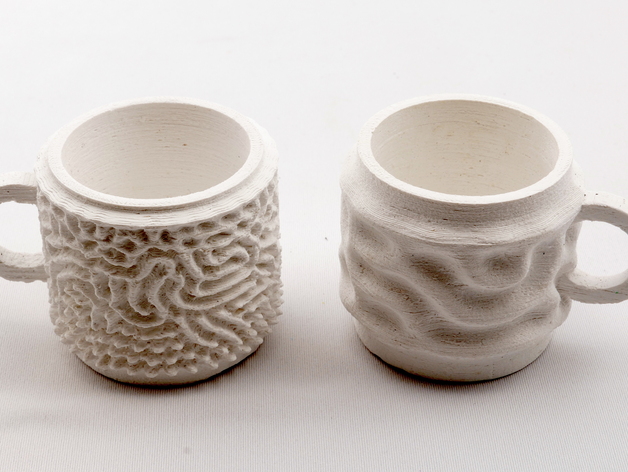
Reaction-Diffusion Demitasse Cup
thingiverse
My Experiment with Reaction-Diffusion Modeling Techniques. The Reaction-Diffusion Model is a technique used to generate complex surface patterns found in certain animals such as zebras or fish. For a detailed explanation, visit this website: http://www.karlsims.com/rd.html . I implemented the reaction-diffusion system on a pipe shape using C programming language and then placed it around a coffee cup designed with OpenSCAD program. Printer Settings Printer: Da Vinci 2.0 duo Supports: To alter the pattern, modify parameters of the reaction-diffusion system in "rdpipe.c," compile, run, and redirect output to "rdpipe-sub.scad". I applied Gray-Scott model on a pipe world with top/bottom sides closed and left/right sides continuous. Changing Design of Coffee Cup Change design settings in "rdcup2.scad". Note: Outer reaction-diffusion layer doesn't match the coffee cup's surface, resulting in it being an improper manifold object. Microsoft Model Repair service fixed it or a solidify operation may work. In "rdpipe-sub.scad", OpenSCAD program initializes v[] array with generated data but lacks skill or software to transfer matrix onto 3D surface (zmap), so I handled this method. Please comment on more effective solutions. My Thoughts on Support Use Supports might not be essential for some 3D printers. Project Overview I employed C programming to calculate the reaction-diffusion system, converted results into OpenSCAD array v[] initializer sub-program, then rendered using OpenSCAD. Upcoming Release The associated C source code will become available shortly. Variation Example The design featuring thinner patterns (seen on another photo left) employs different diffusion coefficients at the top and bottom.
With this file you will be able to print Reaction-Diffusion Demitasse Cup with your 3D printer. Click on the button and save the file on your computer to work, edit or customize your design. You can also find more 3D designs for printers on Reaction-Diffusion Demitasse Cup.
